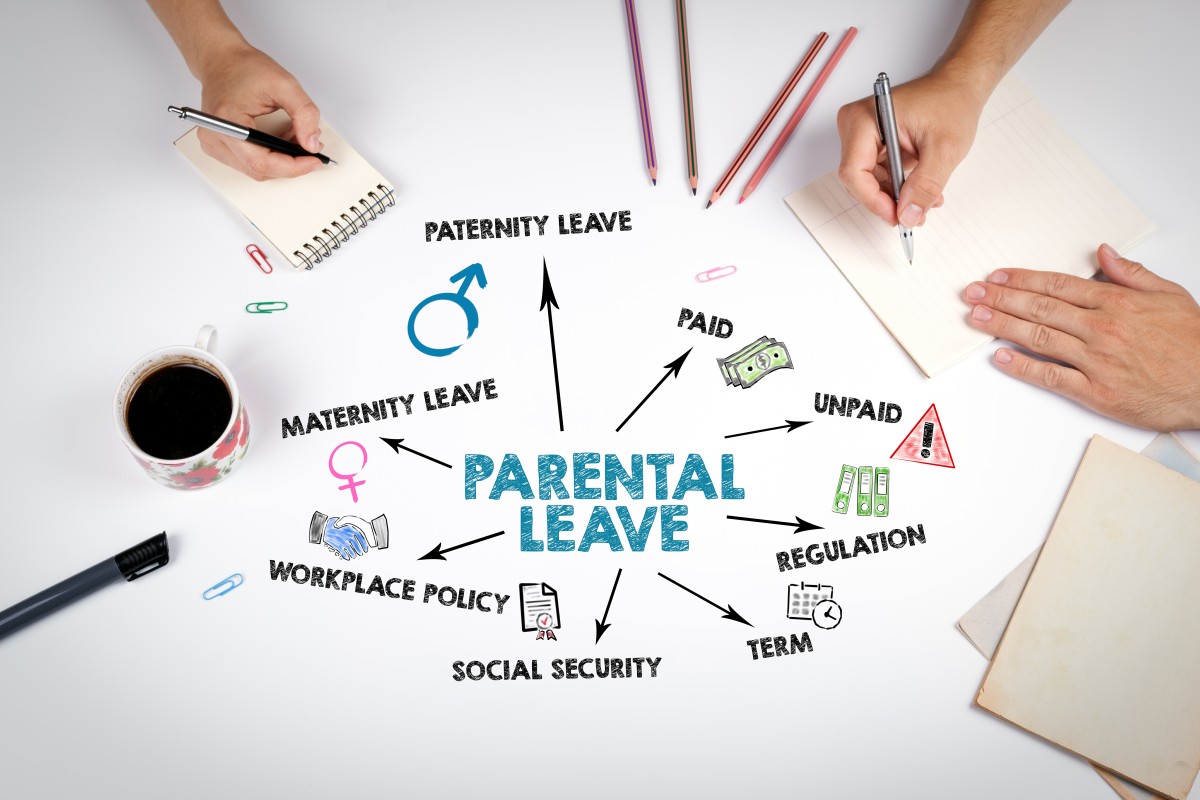
Maternity Leave Rights
The Importance of Maternity Leave Rights
Maternity leave rights are more than just a legal obligation for employers in the UK. They form an essential part of fostering a positive workplace environment, ensuring fairness and promoting employee well-being. Understanding these rights is paramount for businesses that aim to strike a balance between operational needs and legal compliance.
By understanding maternity leave rights, employers can make informed decisions. They can also reduce the risk of legal challenges and enhance their company’s reputation. Moreover, a comprehensive grasp of these rights will pave the way for fostering better employer-employee relations.
Why understanding these rights is crucial for businesses and employee relations
A well-versed knowledge of maternity leave rights ensures:
- Enhanced legal compliance and reduced litigation risk
- Improved employee satisfaction and retention
- Positive brand image and corporate responsibility
- Optimal management of workplace resources during employee absences
- Streamlined communication channels with employees on leave
Every employer must remember that an employee’s experience during pregnancy and maternity can leave a lasting impact. It can influence not only their loyalty to the company but also their overall well-being. Therefore, it’s vital to approach maternity leave rights with a mix of legal awareness and empathy.
Overview of the legal landscape
The UK has established a robust framework around maternity leave rights. This framework aims to protect both the employer’s interests and the well-being of the expecting or new mother. The crux of this legislation centres on ensuring fairness, equality and a non-discriminatory approach. It’s about respecting the significance of motherhood while understanding the operational intricacies businesses face.
To make the most of this legal landscape, it’s imperative to stay updated. Regular reviews of the latest guidelines, court rulings and related areas such as ‘Statutory Maternity Pay’ or ‘pregnant employees’ rights’ can prove invaluable. This proactive approach not only ensures compliance but also nurtures a workplace culture that values each employee’s contributions. See also Maternity rights at work.
Key Aspects of Maternity Leave Rights in the UK
When we talk about maternity leave rights in the UK, we’re referring to a well-defined set of guidelines. These guidelines ensure that every pregnant employee receives the support and protection they deserve during this pivotal period. Being knowledgeable about these rights isn’t just beneficial; it’s essential for every employer.
Statutory Maternity Leave duration and eligibility
Every eligible employee has the right to 52 weeks of Statutory Maternity Leave. This duration comprises two parts: the first 26 weeks, known as Ordinary Maternity Leave (OML), followed by an additional 26 weeks, termed Additional Maternity Leave (AML). To be eligible, the employee must provide appropriate notice and has served in your company for a specific period before their pregnancy.
Statutory Maternity Pay (SMP) – how it works and who qualifies
Understanding Statutory Maternity Pay is vital for both budgeting and employee communication. SMP is typically paid for up to 39 weeks. The amount paid is 90% of the employee’s average weekly earnings for the first 6 weeks, followed by £172.48 or 90% of their average weekly earnings (whichever is lower) for the remaining 33 weeks. To qualify, employees must earn at least £120 a week on average and have worked for the employer for at least 26 weeks by the end of the 15th week before the baby is due.
Additional rights for mothers, e.g., antenatal appointments
It’s also crucial to recognise other associated maternity rights. One such right is the allowance for pregnant employees to attend antenatal appointments. This isn’t limited to just medical check-ups. It can also encompass parenting classes or sessions vital for the well-being of the mother and baby. Employers must provide paid time off for these appointments, reinforcing the commitment to support their staff during this time.
Ensuring that your business is compliant with maternity leave rights isn’t merely about ticking boxes. It’s a reflection of the ethos of your organisation, demonstrating a commitment to employee welfare and understanding. Incorporating terms related to maternity, such as ‘pregnant employees’ rights’ and ‘Statutory Maternity Pay’, into your company’s policies and training can make all the difference. In the end, it’s about building a workplace culture that recognises, respects and supports the journey of motherhood, while ensuring that business operations run smoothly.
Obligations of Employers: Avoiding Legal Pitfalls
Beyond the moral imperative to support expectant and new mothers, there’s a legal obligation. A clear comprehension of these obligations minimizes risks, fosters trust, and strengthens employer-employee relations.
Providing the appropriate notice and documentation
As an employer, it’s essential to be proactive. When an employee announces their pregnancy, ensure you’re equipped with the necessary documentation. This can include forms related to Statutory Maternity Pay or details about the maternity policy. Additionally, set clear channels of communication, ensuring the employee knows how and when to provide notice about their intended leave dates.
Ensuring non-discrimination and understanding unfair dismissal
Discrimination or unfair treatment of an employee because they’re pregnant or on maternity leave is illegal. Employers must avoid making decisions based on an employee’s maternity status. This can encompass areas like promotions, training opportunities, or redundancy decisions. Any action perceived as discriminatory can lead to legal challenges, damage to company reputation and a negative workplace culture.
Health and safety considerations for pregnant employees and those on maternity leave
Ensuring a safe environment for all employees is paramount. For pregnant employees or those who’ve recently given birth, specific considerations may arise. Regular risk assessments can help pinpoint potential hazards. Depending on the nature of the job, adaptations or alternative assignments might be required to ensure the safety of both the mother and unborn child. It’s a proactive step that underscores the commitment to employee welfare.
While these obligations might seem extensive, they serve a dual purpose:
- Protecting the rights and well-being of pregnant employees
- Shielding businesses from potential legal repercussions
- Building a positive, inclusive, and supportive workplace culture
- Maintaining operational efficiency and planning for continuity during absences
Incorporating terms like ‘unfair dismissal’, ‘health and safety for pregnant employees’, and ‘maternity leave rights’ into regular training and policy updates is a proactive approach. It ensures every team member, from management to HR, is aligned. The end goal is clear: a harmonious workplace that respects and upholds the rights of every individual, especially during such pivotal moments as welcoming a new life.
Managing the Workplace
Managing workplace dynamics during maternity leave is pivotal for business continuity. As an employer, preparing for an employee’s absence and ensuring tasks don’t fall by the wayside is essential. This doesn’t just keep the business operations smooth, but it also reassures the employee that their absence won’t create undue pressure on colleagues.
Preparing for an employee’s absence and ensuring continuity
Having a strategy in place is crucial. Here are steps to consider:
- Open a dialogue early with the employee about their intended leave dates.
- Identify the key responsibilities they handle and how these will be managed during their absence.
- Consider temporary roles or re-distributions of tasks among team members.
- Invest in cross-training employees to handle diverse tasks.
Remember, open communication is key. Regularly check in with team members about the additional responsibilities they might be taking on. Ensure they have the resources and support needed.
Communicating with the employee during their leave
While an employee is on maternity leave, the nature of communication changes. It should be empathetic, supportive, and non-intrusive. Here’s a guideline:
- Keep them in the loop about major company updates or changes, but avoid bombarding them with daily minutiae.
- Respect boundaries. Understand that their primary focus during this period is on their health and the baby.
- Use flexible communication channels. Emails can be a great way, allowing them to respond at their convenience.
- Stay open to feedback. If they prefer fewer updates, respect their wishes.
Addressing the option of Keeping In Touch (KIT) days
Keeping In Touch days are a valuable tool. They allow employees on maternity leave to stay connected without formally ending their leave. An employee can work up to 10 KIT days without affecting their maternity rights or pay. It’s a chance for them to catch up, attend training, or be part of significant meetings. Remember, these days are optional. Both the employer and employee must agree on them. They shouldn’t be enforced, but rather presented as a flexible option for those who wish to use them.
In conclusion, managing the workplace during maternity leave is a balancing act. By being proactive, maintaining open communication, and respecting boundaries, employers can ensure a seamless operation. All the while, they’ll be fostering a supportive environment for the employee, reaffirming the company’s commitment to maternity leave rights and the well-being of its staff.
Reintegrating Employees Post-Maternity Leave
Returning to work after maternity leave is a significant transition for employees. As an employer, facilitating a smooth reintegration is not only about respecting maternity leave rights but also about demonstrating empathy and understanding. It’s a pivotal moment that can define the employee’s future relationship with the organisation and significantly impact team dynamics.
Having a structured return-to-work plan
A well-laid-out return-to-work plan can ease the transition. Begin by setting up a meeting before the employee’s return to discuss any changes that might have taken place in their absence. It’s also a good time to chat about flexible work options or phased returns, which can make the shift more manageable. The goal is to ensure the returning employee feels valued and informed, not overwhelmed or side lined.
Flexibility is the key
Post-maternity, an employee’s needs can change. They might require more flexible hours or even the option to work from home occasionally. It’s crucial to approach such requests with an open mind. By offering flexibility, you’re not just aiding the employee but also ensuring that they can give their best when they are working. A flexible approach can lead to increased loyalty, higher job satisfaction, and better overall productivity.
Training and skill updates
Depending on the length of the maternity leave and the nature of the job, some skills might need refreshing. Offer training sessions or workshops if necessary. It’s also a gesture that shows the company’s commitment to the employee’s professional growth after a break. By ensuring they have all the tools and knowledge at their disposal, you’re setting them up for success from day one of their return.
Creating a supportive environment
The emotional and physical impact of motherhood can be overwhelming. As employers, creating an environment where the returning employee feels supported is essential. This support can be in the form of regular check-ins, providing a private space for mothers who might be breastfeeding, or even organising a small welcome-back gesture. The idea is to make them feel that they are an integral part of the team and that their well-being matters.
Incorporating ‘return from maternity leave’ protocols and ‘reintegration plans’ into company policies is beneficial. It not only ensures a seamless transition for the employee but also sets a positive precedent for others. By approaching the post-maternity period with empathy, flexibility, and foresight, employers can fortify the bond with their employee, ultimately benefiting the entire organisation.
Common Misconceptions
The topic of maternity leave rights, while crucial, is often clouded by misconceptions. These myths can lead to unintended mistakes, potentially harming both the employer’s reputation and the well-being of the employee. It’s imperative for employers to differentiate fact from fiction, ensuring compliance and fostering a supportive work environment.
Only long-term employees are entitled
One common misconception is that only those who’ve been with a company for an extended period are entitled to maternity leave. In reality, all pregnant employees have the right to take up to 52 weeks of maternity leave, regardless of how long they’ve been with their employer. The duration of employment might affect eligibility for Statutory Maternity Pay, but not the leave itself.
Employees on maternity leave can’t be contacted
Another myth is the belief that employers cannot contact employees while they’re on maternity leave. In truth, reasonable contact is permissible and can be beneficial. Whether it’s to discuss changes at the workplace, or to broach the subject of Keeping In Touch days, communication is allowed. However, it’s vital to ensure this contact isn’t excessive, respecting the employee’s time during their leave.
Maternity leave only starts when the baby is born
Many believe that maternity leave begins only after the birth of the baby. This isn’t accurate. Employees have the flexibility to choose when they wish to start their maternity leave, but it can be as early as 11 weeks before the expected week of childbirth. If the baby arrives early, the maternity leave and pay will start the day after the birth.
Employers can decide how much maternity pay to give
There’s a notion that the amount of maternity pay is at the employer’s discretion. This is misleading. Statutory Maternity Pay is set by the government. While employers can choose to offer more generous packages as part of their employment perks, they cannot offer less than the statutory amount to those who are eligible.
Understanding the intricacies of maternity leave rights is not just a matter of legal compliance; it reflects an employer’s commitment to employee welfare. By debunking common myths and ensuring accurate knowledge, employers position themselves as informed, supportive and trustworthy entities. Naturally incorporating phrases like ‘rights of pregnant employees’, ‘Statutory Maternity Pay guidelines’, and ‘eligibility for maternity leave’ into training sessions and policy documents will enhance clarity and reinforce a positive company ethos.
Call John Bloor at EBS Law on 01625 87 4400 if you are an employer and need free Employment Law Advice.


